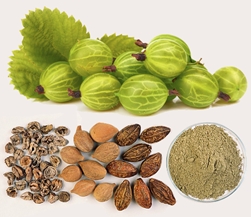The results from the recently published NFHS IV data reveal that Anaemia is on the downslide in Odisha. However, the battle is yet to be won, with sizeable numbers still having a low hemoglobin counts.
| Incidence of Anaemia |
NFHS 4 (2015-16) |
NFHS 3 (2005-06) |
| Children 6-59 months |
44.6% |
65% |
| Non-Pregnant Women (15-49) |
51.2% |
60.9% |
| Pregnant Women (15-49) |
47.6% |
68.1% |
| All women (15-49) |
51% |
61.1% |
| Men (15-49) |
28.4% |
33.9% |
How did Odisha manage to turn around the slide, which is not only for the incidence of Anaemia but also for other key health indicators?
The story of the transformation of the trajectory of the Odisha health indicators is a story of focus, planning, dedication and an honest implementation effort.
1. Enabling Environment:
Odisha has enjoyed political stability since 2003 which has resulted in unhindered policy focus on the development of the state. There has been a significant increase in government spending on health and nutrition with an annual grown rate of more than 20%. The State governments Health Equity Strategy brought in dedicated attention to improving the health of the most disadvantaged people in the State, and recognize the particularly poor health status of Scheduled Tribes and Scheduled Castes and the KBK+ districts. The Nutritional Operation Plan launched by the state targets below 6 yr age children in the 15 high burden districts of the State.
2. Geographical focus on the poorest districts (KBK+)
The Health Equity Strategy and the Nutrition Operational Plan prioritization of KBK+ districts resulted in targeted health and development investment in these areas, and service delivery innovations tailored to the KBK+ context. The National Rural Health Mission expenditure saw a spurt by 45% in KBK+ districts between 2008–09 and 2012–13, in comparison to 28% in other districts. The KBK+ districts include Kalahandi, Nabarangpur, Nuapada, Koraput, Rayagada, Malkangiri, Balangir, Sonepur, Ganjam, Nayagarh and Jajpur.
3.Improving service delivery
A number of initiatives have been taken including construction and renovation of health facilities, training of community health workers, community-based rapid diagnostic kits and introduction of mobile health units. Mobile health units have been particularly of great help in reaching health care to the remotest villages.
4. Increasing women’s access to health services
Odisha has focused on making access to health care and nutrition services more favorable for women and girls. The health facilities are now more gender sensitive including construction of female toilets and partitions in labor rooms for privacy and dignity. Significant strides have been made in strengthening the capacity of female frontline health workers. Adolescent Anaemia Control Program and Village Health and Nutrition Days have contributed in increasing female access. The Janani Suraksha Yojana has made a significant contribution to increasing institutional delivery in the state. Innovative schemes like Mamata and Janani Sishu Suraksha Karyakram provide cashless deliveries and treatment of sick neonates have helped keep the momentum of health services focus on women going.
While significant strides have been made, the job is not fully done yet. Branolia salutes the political leadership, state bureaucracy, health managers, doctors, paramedics, community health workers and citizens of the state in bringing about this turnaround.
Branolia on its part is playing a small role for a healthy Odisha by increasing access to its herbal formulations across the state. Kulerron a formulation based on Kulekhara plant, the best known Ayurvedic herb to fight against Anaemia for fighting Anaemia is now available in a large number of retail counters in the State and is seeing a big uptake. Our other products like Branolia (for increasing mental alertness and well being), Livonia (for regulating liver function), Bellytone (for keeping digestive system tuned and Bitocough (for cold) are extremely popular in Odisha.
Branolia Chemical Works remains committed to health care of the state and will keep providing high-quality ayurvedic formulation to our customers in Odisha.














 Monsoon stems from an Arabic word meaning ‘seasons’. After the hot and humid summer months, the rains come as a blessing for one and all. Whether it drizzles or comes down as a wall of water, the soft vibration over the green landscape that mutes the noises of daily life reduces the intense speed of our usual activities. The monsoon season is a time of introspection, a period which through nature’s support is ideal for meditation and Ayurvedic treatments.
Monsoon stems from an Arabic word meaning ‘seasons’. After the hot and humid summer months, the rains come as a blessing for one and all. Whether it drizzles or comes down as a wall of water, the soft vibration over the green landscape that mutes the noises of daily life reduces the intense speed of our usual activities. The monsoon season is a time of introspection, a period which through nature’s support is ideal for meditation and Ayurvedic treatments.
 n classical Ayurvedic texts. A team of Ayurveda experts review these scholarly texts and shortlist suitable herbs for further research. The availability and sustainability of these herbs are first ensured before research is initiated.With an experience of more than a century; Branolia Chemicals has formulated an assortment of ayurvedic medicines to address health-related issues. The legacy of researching nature forms the foundation of all the operations at Branolia Chemicals. One of the most important of all herbs is Triphala, which has existed in the Ayurvedic cache for centuries.
n classical Ayurvedic texts. A team of Ayurveda experts review these scholarly texts and shortlist suitable herbs for further research. The availability and sustainability of these herbs are first ensured before research is initiated.With an experience of more than a century; Branolia Chemicals has formulated an assortment of ayurvedic medicines to address health-related issues. The legacy of researching nature forms the foundation of all the operations at Branolia Chemicals. One of the most important of all herbs is Triphala, which has existed in the Ayurvedic cache for centuries.